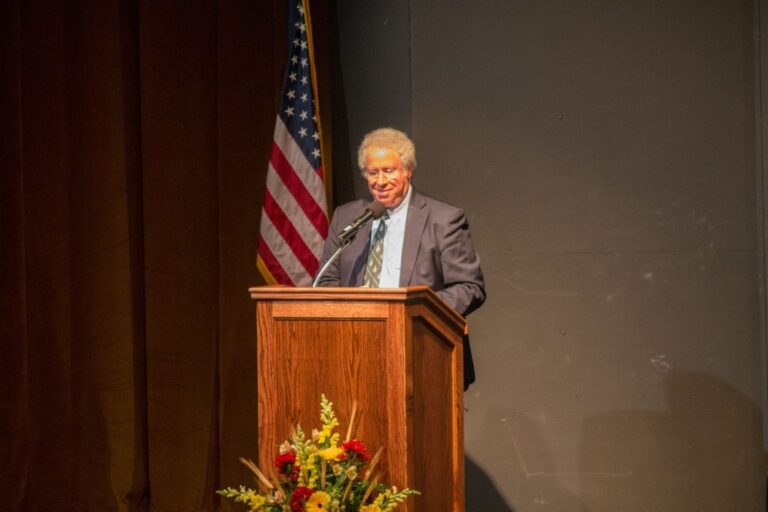New technology across CU campus
Castleton University has upgraded its classrooms with new technology in light of virtual and hybrid learning due to the coronavirus pandemic.
On Feb. 11, James Lambert shared an email with Castleton students, faculty, and staff announcing a new telepresence classroom in the library, detailed with high-tech cameras, microphones, speakers, and an interactive wall panel. This allows for a better teaching and learning experience for on-campus professors and students, as well as virtual students.
But the library is not the only classroom that got an upgrade.
According to Sarah Chambers, coordinator of instructional technology, around 40 classrooms got a technology upgrade.
“We have cameras and microphones installed in 40 classrooms,” Chambers said. “We also have equipment that allows faculty to record and stream lectures or whatever they are doing in the classroom. It’s very faculty-based so it doesn’t necessarily capture the whole classroom experience – it doesn’t capture what students are doing.”
Chambers explained that there were many difficulties, including figuring out what kind of technology to invest in, figuring out the kinks of each device and integrating new technology with old technology and shifting expectations. Some of the rooms hadn’t been updated since 2008, she said.
One classroom that got a facelift was the dance studio.
The dance studio, in the basement of the Fine Arts Center, is often forgotten about. It was often too cold or too hot, windows were either cracked or broken, holes in the walls were left unfilled. Along with fixing the blemishes of the beloved dance studio, new technology was integrated into the space as well.
The new format for the dance studio allows for on-campus dance or theatre classes to be in the studio, while virtual students can dance at home.
MacArthur Stine, director of technical services in the FAC, explains that the new technology serves to seamlessly integrate a new computer, microphone, robotic camera, projector TV and room speakers with Zoom, and the capability to record both digitally and on a USB.
“I was asked to work with FAC faculty to determine their specific needs and to think through potential quirks in our unique classrooms,” Stine said. “In the dance studio, Maya Kraus (professor of dance) and I were able to adapt the base system to accommodate the specific needs of a dance class.”
Gannon Teunisson, a theatre major and dance minor, not only takes dance classes, but also helped set up the technology in the studio.
“It was a process. It was a lot of different and new things to try and figure out,” he said. “The set up was complicated, but the end result is pretty simple, which is really nice. And once it’s understood it’s pretty gratifying.”
He said that he’s glad to finally have an in-person dance class at least for once a week, and people at home can still partake in an advanced way. It’ll make it easier to learn and understand what Kraus is trying to teach by her using this new tech, he said.
“I think it’s really gonna improve the class and make everything so much easier for everyone involved,” he said. “It has been such a struggle to learn strictly over Zoom without any other added elements. Now that we have it, I think it’s really gonna help out.”







